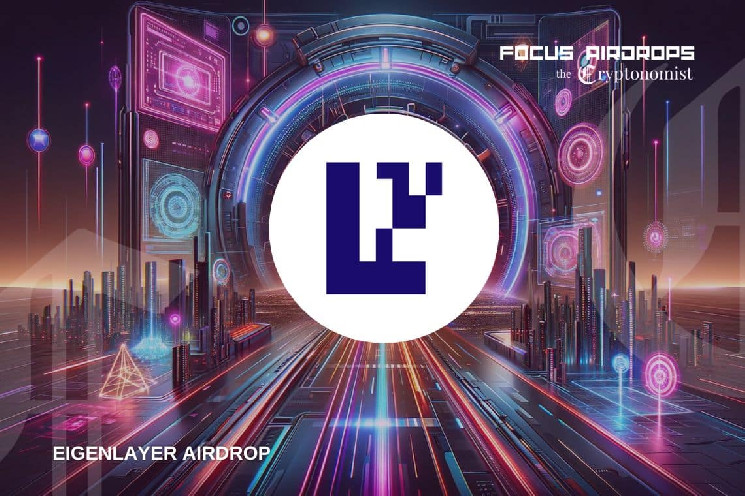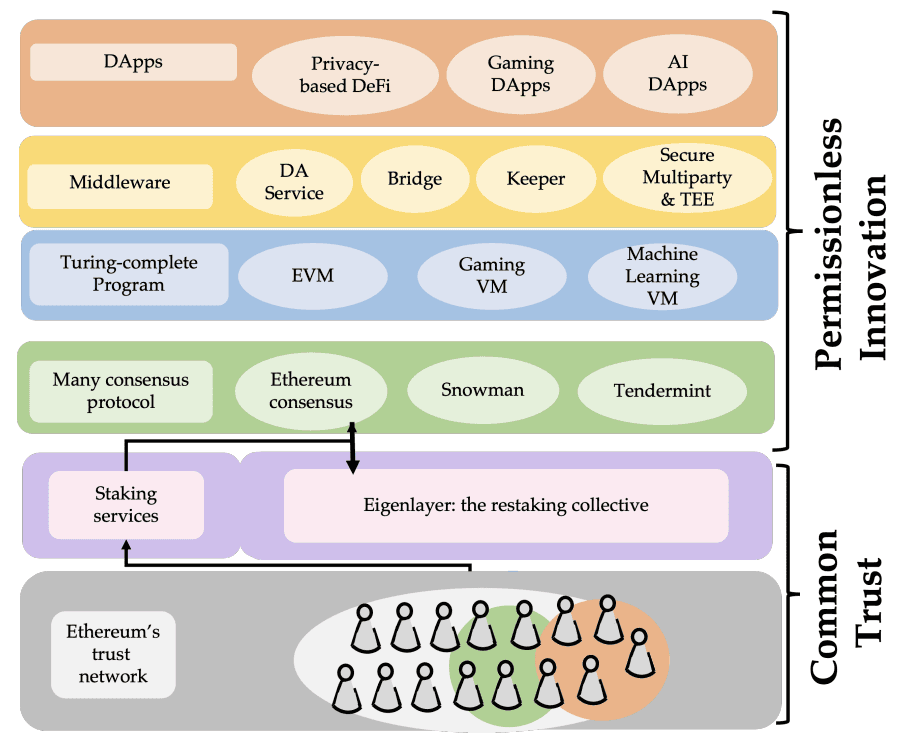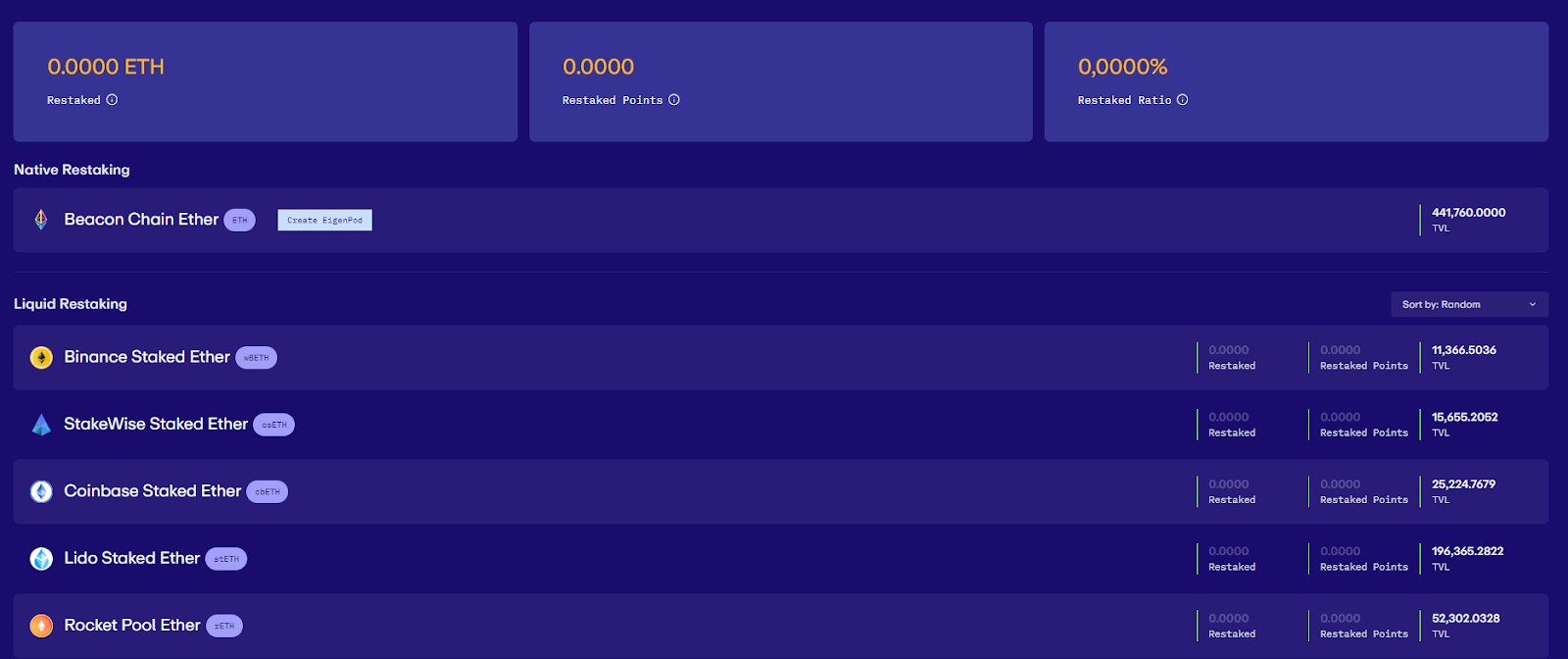
In this article we will delve into the EigenLayer restaking protocol, which allows for additional crypto rewards on previously staked ether, with a focus on the airdrop reserved for early users of the project.
All those who lock their LST tokens (stETH, rETH, ETHx, swETH, etc.) will receive “Restaked Points” which will be subsequently converted into an airdrop when the TGE of the EIGEN crypto occurs.
Let’s see what are the best strategies to achieve the highest performance.
Summary
EigenLayer: the Ethereum restaking protocol
In this week’s airdrop column, we find the EigenLayer project, a cryptographic protocol that operates on the Ethereum blockchain and introduces the revolutionary concept of “restaking”.
This practice allows users who have already staked their ETH through the native platform or liquid staking solutions to reuse the same stakes and earn increased interest, while also contributing to the security of the network and the decentralization of sequencers.
Restaking works like a set of smart contracts that, reusing the consensus offered by Ethereum, extends the cryptographic security of this practice to many applications built on the network.
In fact, anyone who creates a new decentralized service for Ethereum must start a new trust network to protect their system, which somehow fragments the security of the network.
EigenLayer solves this problem by allowing any service, regardless of its composition (such as compatibility with EVM), to draw on the collective security of Ethereum stakeholders, creating an environment for innovation governed by the free market.

In practical terms, this project enables a re-staking system for ETH, creating an opt-in intermediate level where users agree to grant EigenLayer additional application rights on the locked coins in Ethereum’s PoS, allowing for effective re-staking on other applications.
By doing so, the protocol can freely distribute the ethers that have been “recycled” in additional applications, leveraging slashing conditions to enforce honest behavior and discourage harmful actions for the decentralized network.
Therefore, a sort of additional validation services is being created above the mere staking activity.
This kind of innovative approach offers undeniably promising advantages, but also presents potential systemic risks of collapse, as it is constituted by a “financial leverage” system, with which the same resource is used multiple times.
First of all, by opting for restaking on Eigenalayer, one exposes oneself to the counterparty risk of 2 or more smart contracts; then it should be considered that by entrusting the role of validator for one’s ETH to different providers, one could incur the risk of being “slashed” by the network for having relied on a provider who violated the protocol rules.

Despite the non-negligible risks, we must admit that EigenLayer has already gained the esteem of the entire cryptographic industry, reaching a TVL of about 900,000 ETH, equivalent to a value of over 2 billion dollars.
The project, supported by EigenLabs, has a team based in Seattle led by CEO Sreeram Kannan, former professor at the University of Washington and head of research at UW Blockchain Lab, and includes numerous talented software engineers for support.
EigenLayer obtained in March 2023 $50 million through a series A funding round led by Blockchain Capital.
There is still no native Eigenlayer protocol token, but several spokespersons have clarified that this will be created by the end of the year and will be distributed through an airdrop to their community.
The eligibility criteria for the airdrop will likely be based almost exclusively on the so-called “Restaked Points“, which represent points that restakers earn daily based on the amount of tokens locked on the platform.
In the next paragraph we will see how the chances of receiving the airdrop in question will increase by maximizing the earnings.
How to participate in the EigenLayer crypto airdrop: the best strategies to farm as many Restaked Points as possible
Now let’s see what are the best strategies to obtain as many Restaked Points as possible and qualify with a high allocation in the EigenLayer protocol crypto airdrop.
First of all, it is important to clarify that the score calculation for each user is determined by the amount of tokens (native or liquid ETH) staked and the duration in which these resources remain locked.
As an example, 1 stETH staked on EigenLayer for 10 days produces 240 Restaked Points. For native ETH, the calculation is slightly different and takes into account each user’s participation compared to that of all other native stakers.

On Monday, February 5th at 9pm, EigenLayer will reopen the deposits to users (previously stopped due to reaching the hard cap) for the next 4 days, introducing new tokens LST and removing the current cap of 200k tokens per individual.
After these 4 days, the deposits will be stopped again, so we need to be quick to execute the following strategies within the described timeframe.
The first strategy, which allows us to obtain a boost of Restaked Points and at the same time makes us eligible for another airdrop, concerns staking on the Etherfi platform.
By staking our native ETH on this protocol, in addition to receiving the liquid eETH version, we will obtain an extra 3 million EigenLayer Points (to be divided with the rest of the pool) and the “Loyalty Points” for the Ethefi airdrop itself, which is expected to arrive in Q1 or Q2 2024.
This platform has a TVL of 580 million dollars.
Users who deposited stETH, cbETH or wBETH into EigenLayer are in bind, because if they want to exit and deposit into a more decentralized protocol they need to wait 7 days 📆
With deVamp por every 1 restaked xxETH you migrate into eETH you will get 3,000 loyalty points ➕
7️⃣ pic.twitter.com/zrL6U0GJzd— ether.fi (@ether_fi) January 24, 2024
Another solution to achieve a score boost and additional performance is to operate on the Swell liquid restaking protocol.
Here, we can deposit ETH for swETH or rswETH, which respectively represent a liquid staking token and a liquid restaking token, and simultaneously farm for the airdrop of Swell and EigenLayer.
We remind you that swETH must be manually put into restaking on EigenLayer.
Swell is one of the most chosen dapps in this niche context of DeFi and has a TVL of 468 million dollars.
swETH vs rswETH
swETH is a Liquid Staking Token (LST) that must be deposited in EigenLayer to earn EigenLayer Points.
rswETH is a Liquid Restaking Token (LRT) that earns @EigenLayer Points natively, while staying liquid for use in DeFi.https://t.co/1rX3SIYtVp pic.twitter.com/ydwC1s9pBN
— Swell (@swellnetworkio) February 1, 2024
The third strategy is based on the KelpDAO’s LST restaking platform.
On Kelp there is an incentive that allows you to earn “EigenLayer x Kelp Points” by depositing LST tokens from Lido, Frax or Stader for rsETH and potentially contributing to work for 2 airdrops.
This protocol is also quite secure, so much so that it has attracted capital for a TVL of 270 million dollars.
③ 👉 @KelpDAO
Kelp DAO is a protocol that has introduced $rsETH, a token created to provide liquidity for illiquid assets on restaking platforms like EigenLayer.
By depositing your $rsETH into the Early Queue, you will earn EigenLayer x Kelp points. pic.twitter.com/zTZr48h1yH
— ardizor 🧙♂️ (@ardizor) January 26, 2024
In order to earn the maximum possible allocation for the EigenLayer airdrop, it is advisable to practice all 3 strategies presented, also interacting with other platforms that offer the possibility of restaking.
Among the most popular ones we find Renzo Protocol, Espresso Systems, Mantle (mETH), Ion protocol, RocketPool, StakeWise, and of course Lido.
We recommend using, if your financial situation allows it, also Ethereum’s native staking with 32 ETH to delegate.
The most important thing is to operate different protocols, preferring those that offer a boost and the possibility of redeeming a second airdrop, and locking one’s coins for as long as possible.
In conclusion, we remind you that this type of operation that takes place on the Ethereum blockchain has often high gas fees, which could discourage less wealthy users from attempting the hunt for the EigenLayer crypto airdrop.
Anyway, the potential gain is equally high, given the presence of numerous investors and prestigious entities in the web3 landscape in a context where The restaking trend of EigenLayer seems hotter than ever.
